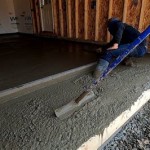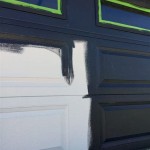Can You Paint a Metal Garage Door to Look Like Wood?
The allure of a wooden garage door lies in its natural beauty, warmth, and the sophisticated aesthetic it lends to a home's exterior. However, genuine wood doors come with significant drawbacks, including high cost, susceptibility to weather damage, and the need for regular, intensive maintenance. As a result, many homeowners seek a more practical and cost-effective alternative that can still achieve the desired visual effect. Painting a metal garage door to resemble wood is a viable option, offering a balance between aesthetics and practicality. This article explores the process, considerations, and techniques involved in transforming a plain metal garage door into a convincing imitation of wood.
The popularity of this approach stems from the inherent advantages of metal garage doors. Metal doors, typically constructed from steel or aluminum, are generally more durable, require less maintenance, and are more resistant to warping, cracking, and insect infestation compared to their wooden counterparts. Furthermore, metal doors are often more affordable and offer better insulation properties, contributing to energy efficiency. By painting a metal door to simulate the appearance of wood, homeowners can enjoy the benefits of metal construction while achieving the desired aesthetic.
The process of faux wood painting on a metal garage door involves several key steps, from preparing the surface to applying specialized painting techniques that mimic the grain and texture of natural wood. The success of the project hinges on meticulous preparation, careful selection of materials, and the application of appropriate painting techniques. A well-executed faux wood finish can significantly enhance the curb appeal of a home and provide a long-lasting and visually appealing alternative to a genuine wooden door.
Key Point 1: Preparation is Paramount
Surface preparation is the most critical step in achieving a successful faux wood finish on a metal garage door. A poorly prepared surface will result in a substandard finish that is prone to peeling, chipping, and premature deterioration. The preparation process involves several stages, each designed to ensure optimal paint adhesion and a smooth, even surface for the faux wood paint to be applied.
First, the garage door must be thoroughly cleaned. This involves removing any dirt, grime, grease, or loose paint. A pressure washer can be used for this purpose, but care must be taken to avoid damaging the metal surface. A mild detergent solution can be used to scrub the door, followed by a thorough rinsing with clean water. Allow the door to dry completely before proceeding to the next step.
Once the door is clean, it should be inspected for any signs of rust. Rust must be completely removed using a wire brush, sandpaper, or a chemical rust remover. Any imperfections or dents should be filled with an automotive body filler and then sanded smooth. The objective is to create a perfectly smooth and uniform surface. After sanding, it is crucial to remove all sanding dust with a tack cloth.
Priming is the next essential step. A high-quality metal primer should be applied to the entire surface of the garage door. The primer serves as a bonding agent between the metal and the topcoat, ensuring proper adhesion and preventing rust formation. Select a primer specifically designed for metal surfaces, and apply it according to the manufacturer's instructions. Typically, two coats of primer are recommended, allowing each coat to dry completely before applying the next. The final primed surface should be smooth and uniform, providing an ideal foundation for the faux wood paint.
Key Point 2: Selecting the Right Materials
The selection of appropriate materials is crucial for achieving a realistic and durable faux wood finish. The type of paint, stain, and tools used will significantly impact the final appearance and longevity of the paint job. It is essential to choose products specifically designed for exterior use and compatible with metal surfaces.
For the base coat, a high-quality exterior acrylic latex paint is recommended. Select a color that closely resembles the base color of the desired wood species. For instance, if aiming for a cherry wood look, a reddish-brown base coat would be appropriate. The base coat should be applied evenly and allowed to dry completely before proceeding to the graining process. Two coats of the base coat may be necessary to achieve full coverage.
The faux wood grain is typically achieved using a gel stain. Gel stains are thicker than liquid stains, making them easier to control and manipulate to create realistic wood grain patterns. Choose a gel stain in a shade darker than the base coat to provide contrast and definition to the grain. Several different shades of gel stain can be used to create a more nuanced and realistic appearance.
Specialized tools are essential for creating the wood grain effect. A wood graining tool, also known as a rocker or wood grain comb, is a rubber tool with raised ridges designed to mimic the grain pattern of wood. These tools come in various sizes and patterns, allowing for different wood grain effects. A wide brush, typically a 4-inch brush, is used to apply the gel stain. A clean rag is needed to wipe away excess stain and blend the grain pattern. Additionally, a small artist's brush can be used to add finer details and touch up any imperfections.
Finally, a clear coat sealant is necessary to protect the faux wood finish from the elements and provide long-lasting durability. Choose a high-quality exterior polyurethane sealant specifically designed for metal surfaces. The sealant will protect the paint from UV damage, moisture, and abrasion, ensuring that the faux wood finish remains vibrant and attractive for years to come.
Key Point 3: Mastering the Faux Wood Painting Technique
The application of the faux wood painting technique is where the transformation truly takes place. This process requires patience, practice, and a keen eye for detail. The goal is to create a realistic wood grain pattern that convincingly mimics the appearance of natural wood.
Begin by applying a thin, even layer of gel stain to a small section of the garage door. Working in manageable sections, typically 2-3 feet wide, prevents the stain from drying too quickly and allows for better control of the graining process. Use the wide brush to spread the stain evenly over the base coat.
Immediately after applying the stain, use the wood graining tool to create the wood grain pattern. Hold the tool at a slight angle and rock it back and forth in a smooth, continuous motion, moving the tool along the surface. Experiment with different angles and pressure to achieve various grain patterns. Overlapping the strokes slightly will create a more natural and random appearance. Practice on a scrap piece of metal or cardboard to get a feel for the tool and refine the technique before applying it to the garage door.
After creating the grain pattern, use a clean rag to gently wipe away excess stain. This will highlight the grain and create depth and dimension. Vary the pressure applied with the rag to achieve different effects. Wiping more stain away in some areas will create lighter tones, while leaving more stain in other areas will create darker tones. Blending the edges of the sections as the work progresses will create a seamless and natural appearance.
For a more realistic effect, consider adding knots and other imperfections. These can be created using a small artist's brush and a darker shade of gel stain. Carefully paint small circles or ovals to represent knots, and blend them slightly with a clean rag. Adding these small details can significantly enhance the realism of the faux wood finish.
Once the entire garage door has been painted and the stain has dried completely, apply the clear coat sealant. Apply two or three thin coats of sealant, allowing each coat to dry completely before applying the next. The sealant will protect the paint from the elements and provide a durable, long-lasting finish.
Achieving a convincing faux wood finish on a metal garage door requires careful planning, meticulous preparation, and the application of specialized painting techniques. By following these steps and taking the time to practice and refine the technique, homeowners can transform their plain metal garage doors into beautiful and realistic imitations of wood, enhancing the curb appeal of their homes without the high cost and maintenance of genuine wooden doors.

Diy Garage Door Makeover Gel Stain To Look Like Wood House Home

How To Paint A Door Look Like Wood It S Easier Than You Think Average But Inspired

How To Paint A Door Look Like Wood 7 Shades Choose From

Create A Faux Wood Garage Door With Gel Stain Crazy Life Littles

Create A Faux Wood Garage Door With Gel Stain Crazy Life Littles

How To Paint A Door Look Like Wood 7 Shades Choose From

How To Paint A Door Look Like Wood It S Easier Than You Think Average But Inspired

Create A Faux Wood Garage Door With Gel Stain Crazy Life Littles

Have Your Garage Door Faux Finished To Simulate Wood Yes Most Of These Photos Are Standard Metal Paint Doors

Faux Wood Garage Door Tutorial Prodigal Pieces
Related Posts








